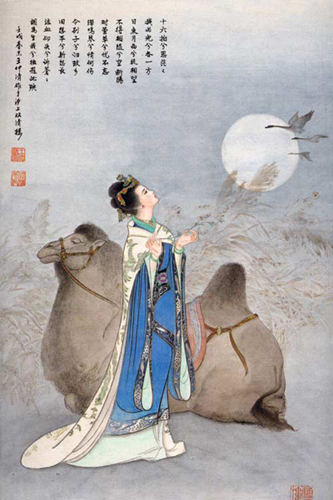Art
Top ten famous traditional Chinese music pieces
Updated: 2011-03-25 15:47
(chinaculture.org)
 |
Originally a piece of guqin music, Eighteen Songs of a Nomad Flute evolved into two different instrumental music species after the Wei and Jin dynasties - Major Nomad Flute Chanting and Minor Nomad Flute Chanting, the former being directly derived from Eighteen Songs of a Nomad Flute. According to legend, it had been composed by Cai Wenji.
In the guqin music, Cai Wenji blended into her guqin music the nomad flute’s advantage in reproducing plaintive sound, and expressed her extremely conflicting and painful feelings - her nostalgic yearning for her hometown and her reluctance to tear herself away from her endeared ones. Consisting of eighteen segments, the piece of music employs three musical notes - Gong, Zhi and Yu. The music is composed of two parts in content - the first part depicting her plaintive mood of homesickness in an exotic land far away from her hometown, while the second part expressing her hidden bitterness and sorrow for parting with her small children.
There are two versions of musical scores handed down to present generation. One is the guqin song with matching lyrics collected in Qin Shi compiled in the Ming Dynasty. The lyrics are identical with the namesake narrative poem composed by Cai Wenji. The other is the solo music recorded in Music Scores of the Chengjian Hall compiled in the early Qing Dynasty and other later music scores. The latter version is more widely circulated.
E-paper

Green light
F1 sponsors expect lucrative returns from Shanghai pit stop
Buying into the romance
Born to fly
Light of hope
Specials

Share your China stories!
Foreign readers are invited to share your China stories.

No more Mr. Bad Guy
Italian actor plans to smash ‘foreign devil’ myth and become the first white kungfu star made in China.

Art auctions
China accounted for 33% of global fine art sales.
